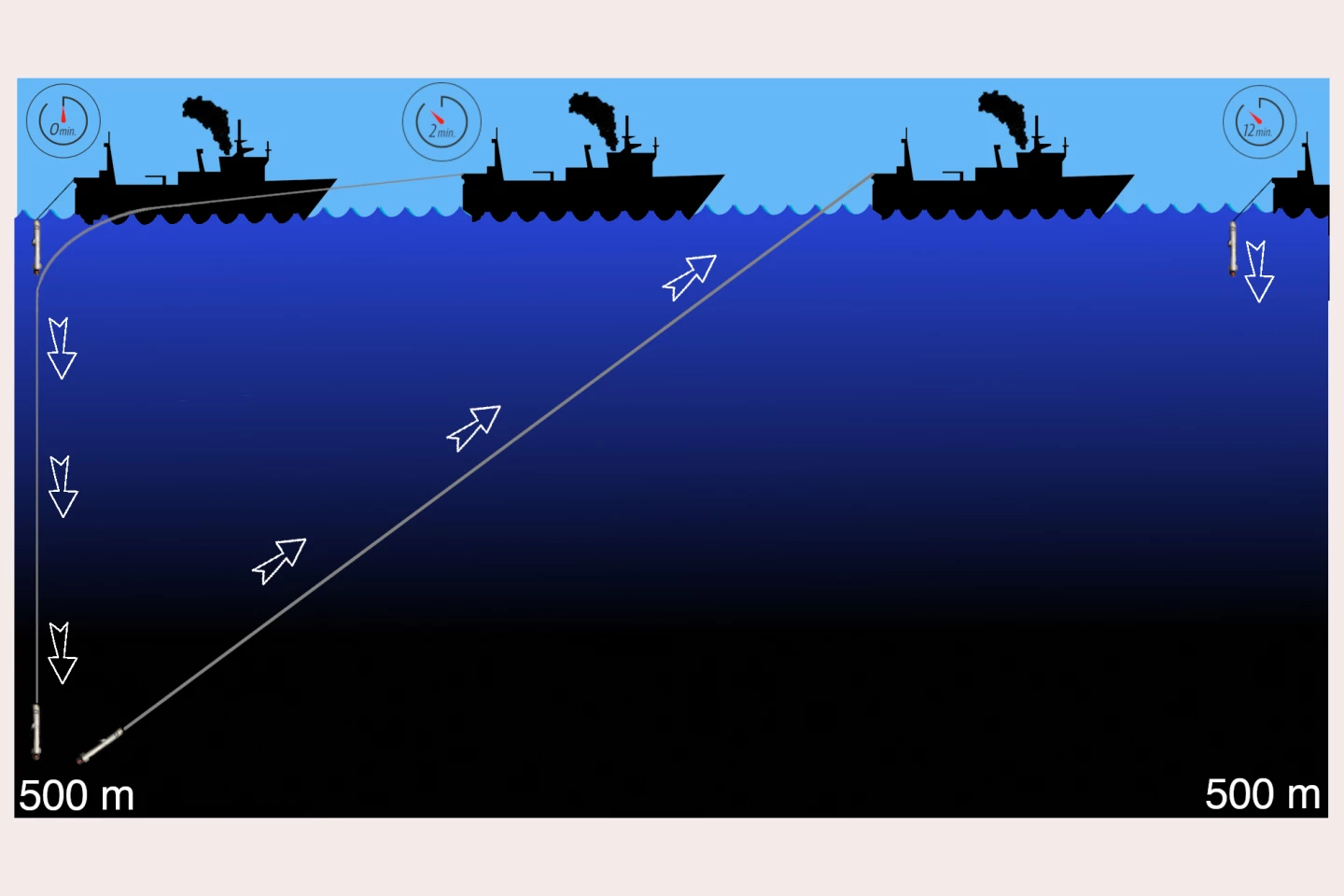As everyone knows, marine life near the surface of the ocean is much different than that which lives in the deeps. In order to get a better understanding of how those regions differ, scientists have created a biological probe that free-falls through the water.
Developed by a team from MIT and the Woods Hole Oceanographic Institution, the device is known as the EcoCTD. It's a member of an existing class of oceanographic probes called CTDs – that acronym stands for the fact that they measure the water's conductivity, temperature and depth. They also typically collect water samples, which are later checked for life forms such as plankton.
Ordinarily, research vessels that are carrying CTDs have to stop and wait around as the probe is lowered down into the water, left to gather data, and then winched back up again. This limits the geographical area that can be covered in a given amount of time.
There are types of CTDs that can be deployed and retrieved without requiring the ship to stop, but the compromise with those is that they're not able to collect water samples. That's where the EcoCTD comes in – it's designed to be used while the vessel is in motion, but it's also able to measure concentrations of chlorophyll, which is the green pigment produced by phytoplankton. The presence of plankton in turn indicates that other, larger organisms may be present.
As soon as it's dropped overboard, the probe's heavy lead collar causes it to fall down through the water at a rate of about 3 meters (9.8 ft) per second. Even with the cable-tethered host vessel still cruising forward, this fast descent speed allows the EcoCTD to reach a depth of 500 meters (1,640 ft) within approximately two minutes – this is past the depth at which photosynthesis is able to occur.
The crew then uses a crane to winch the probe back to the surface. Trailing behind the ship, the EcoCTD catches up with it within about 12 minutes, covering a vertical distance of around 500 m. It can then be immediately redeployed.

As the device travels through the water, an onboard sensor called the EcoPuck emits pulses of red and blue light. By analyzing how that light gets scattered, the sensor is able to ascertain how much, if any, chlorophyll is present. Additionally, another sensor known as the Rinko III Do measures oxygen concentrations at different depths, which can in turn be used to estimate how much oxygen is being taken up by any microbial communities.
The EcoCTD has already been successfully tested in 2018 and 2019, on cruises that took place in the Mediterranean Sea and Atlantic Ocean.
Source: MIT





